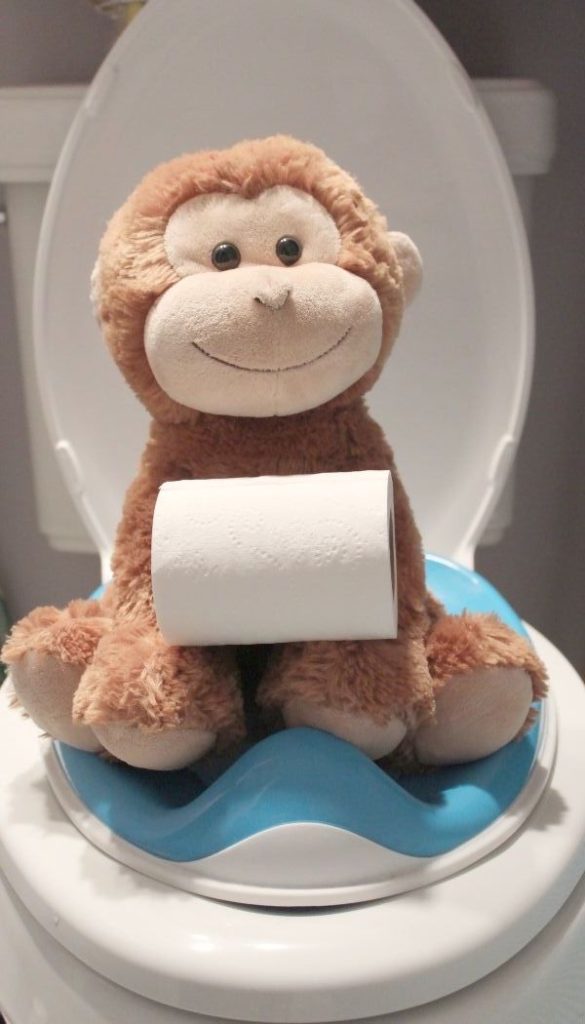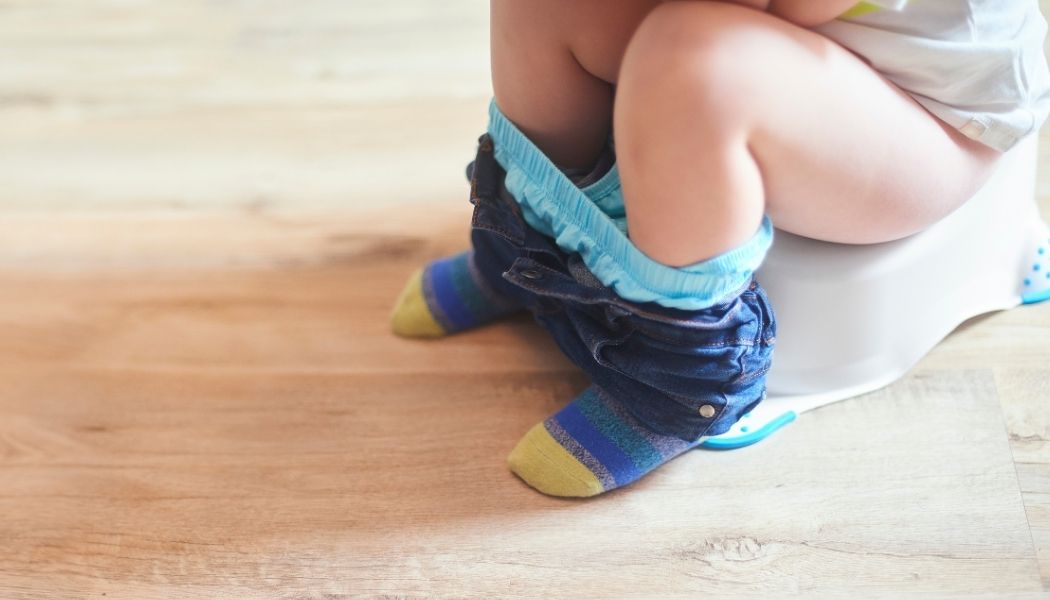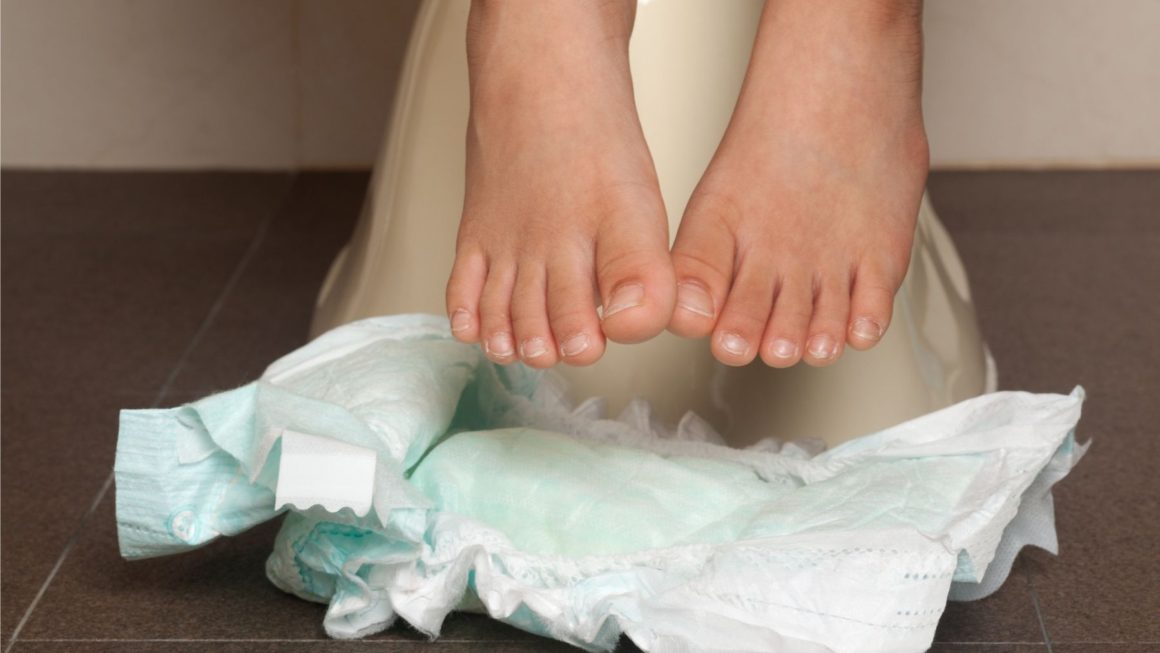Potty training is just hard, friends. Sometimes, it goes smoothly. Other times, it goes awry. This is a really challenging task, and depending on how the child processes information and the whole situation, he might show certain behaviors that are tricky to support to progress their independence. So read on about the most common potty training problems and ways to approach them!
If you’re just getting started or feel like you need a reset, check out my general toilet training post. And if you have a kiddo that has extra needs such as developmental disability or delay, you may want to take a peek at my post about toilet training kids with additional needs.
Below, you’ll find some ways to troubleshoot specific difficulties that come up. These are things that come up for A LOT of kiddos! This post is intended to give you strategies to try for common problems. Remember, there are no magic wands and not everything works, but here are some action steps to try.
1. Child insists on only pooping in a diaper
This child shows all the signs of readiness and awareness of need to have a bowel movement. Maybe he is even toilet trained for urination. But he puts up such a fuss to poop in the diaper only. So, to avoid constipation and stool withholding, you put that diaper back on and allow him to go.
This could be happening for a few reasons. It could be the comfort and feel of the diaper itself. It could also be the position that the child needs to get in to actually have a bowel movement (such as standing or squatting).
Honestly, if you want to just put that diaper on, go for it. As you’ll read below, I suggest avoiding constipation and anything that might make pooping anxiety-producing or painful.
Here’s what you can do: Encourage your child to poop in the bathroom with the diaper on. If she must keep her diaper on, she can do it in the bathroom. You can be in there, or not, maybe they have a preference. Change the diaper in the bathroom. If the poop is solid, put it in the toilet and encourage your child to flush it.
Eventually, encourage the child to have bowel movement closer and closer to the toilet, and ultimately on the toilet (with the diaper still on). Some people have cut holes in diapers to allow them to sit with it on and then the poop goes in the toilet. I really don’t see how this logistically works. Theoretically, sure. So if you want to, go for it. You could also try to loosen up the straps on the diaper little by little so there is less “snugness” that is provided. Slowly, slowly they’ll become more flexible and accepting of pooping on the toilet, without a diaper.
2. Holding it all day
Where are my camels at? My daughter also held her pee until the very last minute… second really. It infuriated me while simultaneously made me so anxious. I was trying to give her freedom and also trying to avoid an accident. That was hard for me.
But some kids hold it all day. This is stressful. This feels like it could lead to health issues. You could push the fluids and put on pull-ups, then training pants, then go no undies so that they gradually get used to going and feeling it a little more than before. This would provide a progression away from diapers, which are so moisture-wicking, some kids really don’t mind them.
Another trick you could try is to put undies on underneath a diaper. Let them know that they are still learning. It’s not ok to hold pee in and its good to get it out. Continue to attempt sitting on the toilet with a solid routine. If sitting on the toilet is an all-out battle, keep reading 😉
3. Aiming
Oh little boys. And really, all boys. Apparently, I’m told that this is a harder task than it seems.
When your little one is learning, I usually recommend sitting for both pee and poop. This way, they don’t have to differentiate between the sensations of what a poop feels like and what pee feels like. You can have them sit forward and teach them to push their penis down toward the water. Or, you can try having them sit backward. Still point his penis down to the water in this position. Sitting backwards might just offer more stability for them and start them off in the direction they ultimately will face.
When they are ready to stand, make sure they have a good angle and height from where they are “shooting” from. Use a step stool or sturdy platform to have them stand on.
Try creating a phrase, saying, cue, or song to have them remember to aim every time. Help them create a habit and have it be a part of their routine.
“Pee goes in the water,
Me. I literally made this up.
aim your penis down,
keep the pee from spraying,
to keep it off the ground!”
This post contains affiliate links and I may receive commission when you click on links and make purchases. However, this does not impact the price you pay!
There are targets on the market that you can put in the toilet water for them to aim at. Or, try fruit loops or cheerios! Much cheaper.
Lastly, have them help clean up. This is a skill that is necessary going forward. It can help them understand why we want them to aim and provide some incentive to get the pee where it needs to go.
4. Stool withholding
Oh these poor little ones that hold their poo in! This is an area that I will encourage you to loop your primary physician into and you may want to seek out some additional assistance, such as from a gastrointestinal specialist and or health psychologist. Stool withholding can be painful, create anxiety, and contribute to overall difficulty with nutrition and daily activities. An approach from multiple disciplines that can communicate is best here.
For these little ones, I’ll encourage you to allow them to poop in whatever way they want for now, maybe it is their diaper. If possible, however, do this in the bathroom. They might need you right there with them. Some kids require you to hold them, some might need you to comfort them. Some might want total privacy. If the bathroom causes anxiety… keep reading.
It can be helpful to use some strategies to get the poop out using positions and deep breathing.
Get that poo out!
- Consider a Squatty Potty. This does provide a good position for elimination. Or, use a floor potty since their bodies are so little. Prop their feet on a text book as a makeshift squatty potty.
- Try some yoga stretches. Remember when kids are babies and we bicycle their legs to give some relief? Similar to this, have your child lay on his back, and bring one knee up to his side and hug it toward his armpit. Hold it for 10 seconds and switch sides. Make it fun. Maybe it could be called a sleepy flamingo!
- When the child is attempting to pass her stool, help her take deep breaths to relax her pelvic floor. This also just helps relax her and keep any anxiety around pooping at bay. Help them “smell the flower, blow out the candle” while using a finger as a focal point.

5. Screams at the suggestion of sitting on the toilet
Some kids realllllly dislike sitting on the toilet or even entering the bathroom. There might be a few reasons behind this. One could be the physical toilet or the environment of the bathroom. Sometimes the acoustics of the bathroom or the sound of the toilet flushing is too much. Sometimes, the act of toileting is so averse to them, and going into the bathroom triggers that.
Here are some things to try in these situations. The biggest idea is that you want to make the toilet or bathroom a safe space. Feel free to take out the act of voiding or stooling on the toilet or in the bathroom. First thing is first: you need to enter the bathroom in order to feel comfortable enough to void.
Ways to normalize the bathroom and toilet
- Consider a portable potty chair and keep it out of the bathroom at first.
- Play “potty” with guys and characters frequently. Make it playful. No pressure for the child to even participate! If they don’t engage, that is ok. They see you modeling it.
- Decorate the potty seat with stickers and characters and things of their choosing.
- Use the potty seat as just a chair. Play fun, novel games on it to increase exposure. Keep pants on and again, no pressure to take them off and try to pee.
- Go into the bathroom for other things. Enjoy sensory play in there, bathe guys or dolls, have them come in with you while you go (if you’re comfortable).
- Use a short period of time and specific end to sitting. You can place them on the toilet and let them know when they are done. “Count to 3 then done! 1-2-3 done!” Then give lots of praise.
- If your child will sit on the potty, use a “Potty Bag” or bucket of books or toys that are specifically designated to use when sitting on the potty. Even if they don’t eliminate, sitting on the toilet is a success!

Slow and steady wins the race on this one, ya’ll.
6. Poops at nap time/bedtime only
Every. Time. Not much you can do to stop this one. One of my philosophies is that we, as parents and caregivers, can only give opportunities and children get to decide to take them. This is especially true for toileting (feeding and sleeping too!). We can’t make them go and we can’t make them hold it in. We just can’t.
So, keep the routine. Keep talking about it. When you change him, give as little interaction as possible so there is not unintentional reinforcement. Keep continuing to take him before nap, even if he doesn’t go. Continue talking about “when you put your poop in the potty, we will celebrate!” “You’re still learning, but soon you will put your poop in the potty just like Mom/Dad/brother/sister!” Celebrate the successes you do have.
Consider an incentive chart or reward chart like the one below. When she does anything in the toilet, give a sticker. Eventually, you could back off on the pee stickers and tell her that she will get one for putting poop in the potty.

7. One million requests to go pee at bedtime
This is a tricky one. You want to honor his requests and communication to go in order to reinforce independence, but also you know it is a stall tactic to delay sleeping. You do what is best for your family on this one. But consider this: go as your bedtime routine. Limit liquids before bedtime. Offer one trip to the bathroom if requested, then let them know that it is their choice to hold it until morning. Or, if you don’t want to battle, put a pull up on. Sometimes, sleep trumps potty and you can figure this one out later.
8. Frequent accidents
Sometimes kids have a harder time holding their pee in. This could be for a number of reasons.
It could be because they lack the sensation of needing to go until it is too late. Or maybe they have a hard time communicating, planning, sequencing the steps from the time they feel the sensation, and they just can’t do it fast enough. They could have a weak pelvic floor that leads to dribbles in between. Or, they might just not want to go when they need to go! Here are some things to try if the child in your life has frequent accidents.
Also, remember that it is ok to pump the breaks and back off if you need to. Accidents can be frustrating for everyone involved and it may be a sign that the child just isn’t quite ready.
- You decide on the timing. Set a timer, make a schedule and tell them it is time, don’t ask. This takes out their need to process every piece of it. As he or she gets older, they can wear a watch with a timer feature to cue them on their own.
- Consider putting undies on underneath a pull up if you are still doing pull ups. This might help them feel the wetness of their accident without the mess of an accident. This could help them build the connection of needing to pee and already peeing (without the unintentional frustration on the caregiver’s part).
- Consider adding some pelvic floor strengthening into his repertoire. An “easy” one for kids is doing a bridge (see photo). Have the child lie on his back, bend knees, and lift hips to create a straight line from knees down to chin. Hold it for 15 seconds. Practice going up and down slowly.
- Talk to your doctor about a pelvic floor specialist if your child is at a developmental level that they should stay dry in between trips. Typically it is important if your child is able to follow directions for this type of intervention.
- If your child has a hard time stopping what they are doing in order to go, consider putting a see-through bucket outside of the bathroom door (or wherever you decide). Have them place the toy or item that they are playing with in that basket. House rule: no one touches this while she goes to the bathroom. Then, she can return to the bucket when she is done.

So there you have it. Let me know! What am I missing? What tricks have worked for you? What does your child struggle with in the potty department? I want to hear from you.
Oh Crap! Potty Training: Everything Modern Parents Need to Know to Do it Once and Do it Right -Jamie Glowacki



